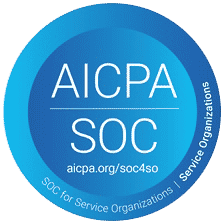Skills Management Software: The Start of a Bigger Plan for Workforce Management

In large manufacturing and industrial enterprises, workforce management goes beyond tracking who is qualified for a specific role. Skills management tools are an essential first step, but their true potential is realized when integrated into broader labor planning and scheduling processes. This article explores how skills management software serves as a foundation for operational excellence, […]
The Role of Continuous Training in Future-Proofing Your Workforce

Regardless of your industry, staying ahead of the curve demands innovation—innovation is impossible without a workforce with up-to-date skills and knowledge. Rapid technological advancements, shifting regulatory landscapes, and intensified competition mean that yesterday’s expertise may no longer meet today’s demands. Continuous training has emerged as a strategic necessity for organizations navigating this dynamic environment, not […]
Why Effective Logistics Scheduling is Essential for Success in the Transportation Industry

Logistics is the backbone of the transportation industry. Whether it’s coordinating shipments for third-party logistics providers (3PLs), managing fleets of trucks across sprawling networks, or ensuring punctuality in public transit systems, the success of these operations hinges on one critical factor: logistics scheduling. Logistics scheduling is the process of planning, organizing, and optimizing the movement […]
The Bullwhip Effect: Understanding and Mitigating Supply Chain Disruptions

Supply chains are under increasing pressures to deliver goods efficiently and accurately. One major challenge that organizations encounter is the bullwhip effect—a phenomenon where minor consumer demand fluctuations lead to larger, cascading changes throughout the entire supply chain. This ripple effect can cause significant disruptions, including inventory imbalances, production inefficiencies, and increased costs. Understanding and mitigating […]
2025 Workforce Management Trends: Forecasting for Business Success

Workforce management trends for 2025 will emphasize greater agility, resilience, and precision than ever before. Amid rising labor costs and supply chain disruptions, companies are reimagining their approach to workforce planning and employee engagement. From the strategic integration of temporary workers to an increased focus on upskilling, these shifts are reshaping traditional workforce models to […]
The Essential Role of SaaS Integrations in Modern Workforce Management

As the world and business operations become increasingly digitalized, integrating systems for seamless functionality is essential. Software as a Service (SaaS) integrations provide the connectivity that enables various software solutions to operate as a coordinated whole, which, as Wikipedia defines, is “the process of linking together different computing systems and software applications physically or functionally, […]
Overcoming the Challenges of Disparate Systems with Enterprise Scheduling Software

This is part 2 of our Enterprise series. Part 1 explored why enterprises need to centralize their workforce management processes to properly scale. With employees scattered across different states—or even countries—enterprises need to make sure every facility is compliant with varying regulations and can respond to different shifts in market demands. Choosing the right enterprise […]
Skills, Competencies, & Qualifications: Everything You Need to Know

Shift-based work environments must manage constant, unpredictable changes—call outs, swapped shifts, and production demand fluctuations, to name a few—while adhering to complex regulatory requirements. Ensuring that your workforce is equipped with the necessary skills, competencies, and qualifications to keep up with last-minute adjustments is crucial. And they’re not all the same thing. Matching employees to […]



